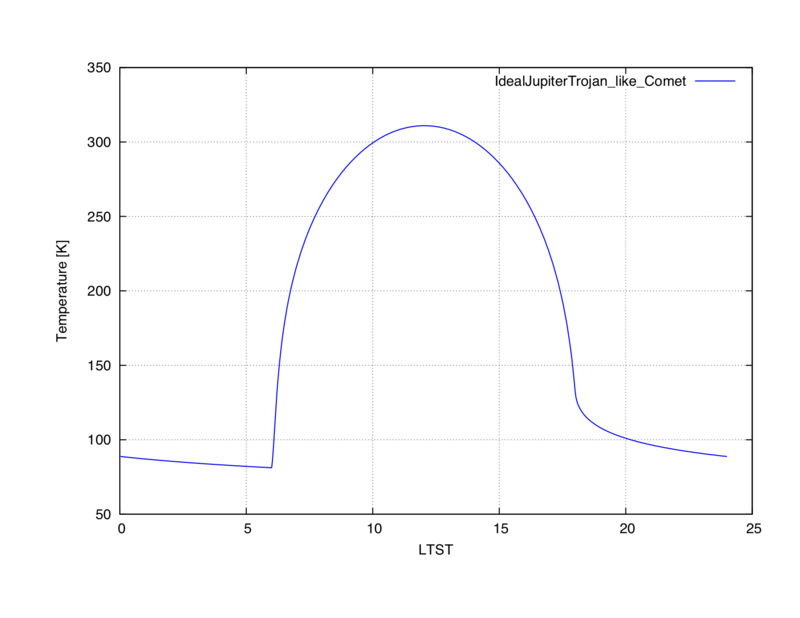KRC for Comets
From krc
Careful!!! For most comets, the rotation period is not known sufficiently well to be reported. In this case, KRC uses a rotation period of 24h by default.
Also comets here are treated with the physical properties as for an asteroid!
If the rotation period is known by the user, set it with PERIOD.
For example:
out = krc(lat=0.,INERTIA=50.,T_user=220.,LKofT="T",body="Halley",ls=0.)
For other bodies -not in the list above-, the user needs to generate the rotational matrix. First, run PORB to create a structure that can be ingested to generate the orbital rotation matrix. The following arguments are needed:
- e: Eccentricity (Default=0)
- a: Semi-Major Axis in AU (Default=1)
- i: Inclination of mean orbit to ecliptic in degrees (Default=0)
- node: Longitude of the ascending node in degrees (Default=0)
- per: Argument of perihelion in degrees (Default=0)
- m: Mean Anomaly at epoch in degrees (Default=0)
- rot_per: siderial rotation period in hours (Default=23.9345)
- polera: Right Ascension of the pole in degrees (Default=0)
- merid: Prime meridian at epoch in degrees (Default=0)
- poledec: Declination of the pole in degrees (Default=0)
- period: Sideral orbital period in Earth days (Default=365.256)
- name: Body name (default ="None")
Then run generic_porb() with these arguments, for example:
tmp = generic_porb(e=0,a=1.,i=1.3,node=100.4,peri=293.9,m=79.6,rot_per=200.,polera=273.8,poledec=0.,merid=7.7,period=4332.5,name="IdealJupiterTrojan_like_Comet")
Then run KRC using this new body as the "body":
out = krc(lat=0.,lon=0,INERTIA=20.,ALBEDO=.05,LKofT="F",body=tmp)
This case predict surface temperature for a new body named "IdealJupiterTrojan_like_Comet".
